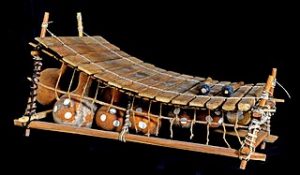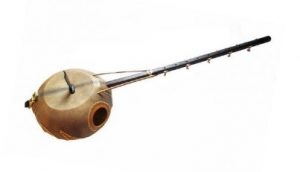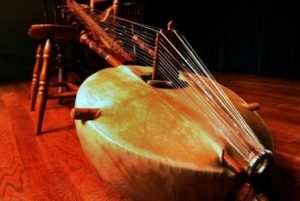Caroline Iantosca | March 1, 2017
For centuries, the history, beliefs and folklore of West African communities have been kept alive through the tradition of music and oral storytelling. Stories have been passed through the ages by Griots, also called Jalis, who are musicians, poets and historians.
K-12 and community college educators can experience modern-day griots firsthand at the opening plenary of World View’s spring seminar, Stories of Africa: Connected Over Time and Across the Globe (March 29-30). The Shabatuso family of griot artists will kick off an Africa immersion focused on exploring the richness of the African continent and its interconnectedness through time and around the world.
Dating back to the 13th century, the role of the Griot originated in the Mande Empire (present-day Mali). Griots had important and multifaceted duties as musicians, genealogists, advisers, teachers, interpreters and historians, responsible for preserving the ancestral records of entire communities through oral storytelling. Griots were highly respected members of society, and their role evolved into a hereditary social caste. The position was passed from parent to child, like an apprenticeship. If you were born into a Griot family, you would begin training from a young age to learn hundreds of songs and stories, spending years of preparation memorizing the records of births, deaths and marriages through the generations of your village and family. Griots told their stories through music, using accompanying instruments such as the balafon, ngoni or the kora.
The balafon is similar to the modern-day xylophone, made from wooden keys and calabash gourds. It was once an instrument only played for kings, fixed into the ground over holes to help the sound reverberate.
The ngoni is a small, lute-like instrument with a body made from wood and animal skin stretched over its face, much like a drum. Its strings are made from fishing line and can produce high-pitched sounds – it is considered to be one of the precursors of the modern-day banjo.
The kora is a much larger instrument, a cross between a harp and a lute. Its 21 strings are plucked with the thumb and the index finger.
Music plays a key role in West Africans’ daily lives for dance, healing, storytelling, and religious practice. Smithsonian Folkways has developed lesson plans for hands-on experience in the music classroom of musical practices from around the world, including some from West Africa:
West African Songs and Chants (Grades 3-8) offers teachers opportunities to use children’s music from Ghana to gain experience with basic polyrhythmic ensembles. Singing, chanting, dancing and playing instruments are included throughout the unit.
They’re Ghana Love It!: Experiences with Ghanaian Music (Grades 6-8) is a lesson plan for students to experience the musical cultures of Ghana through listening, movement, game play and percussion performance.



